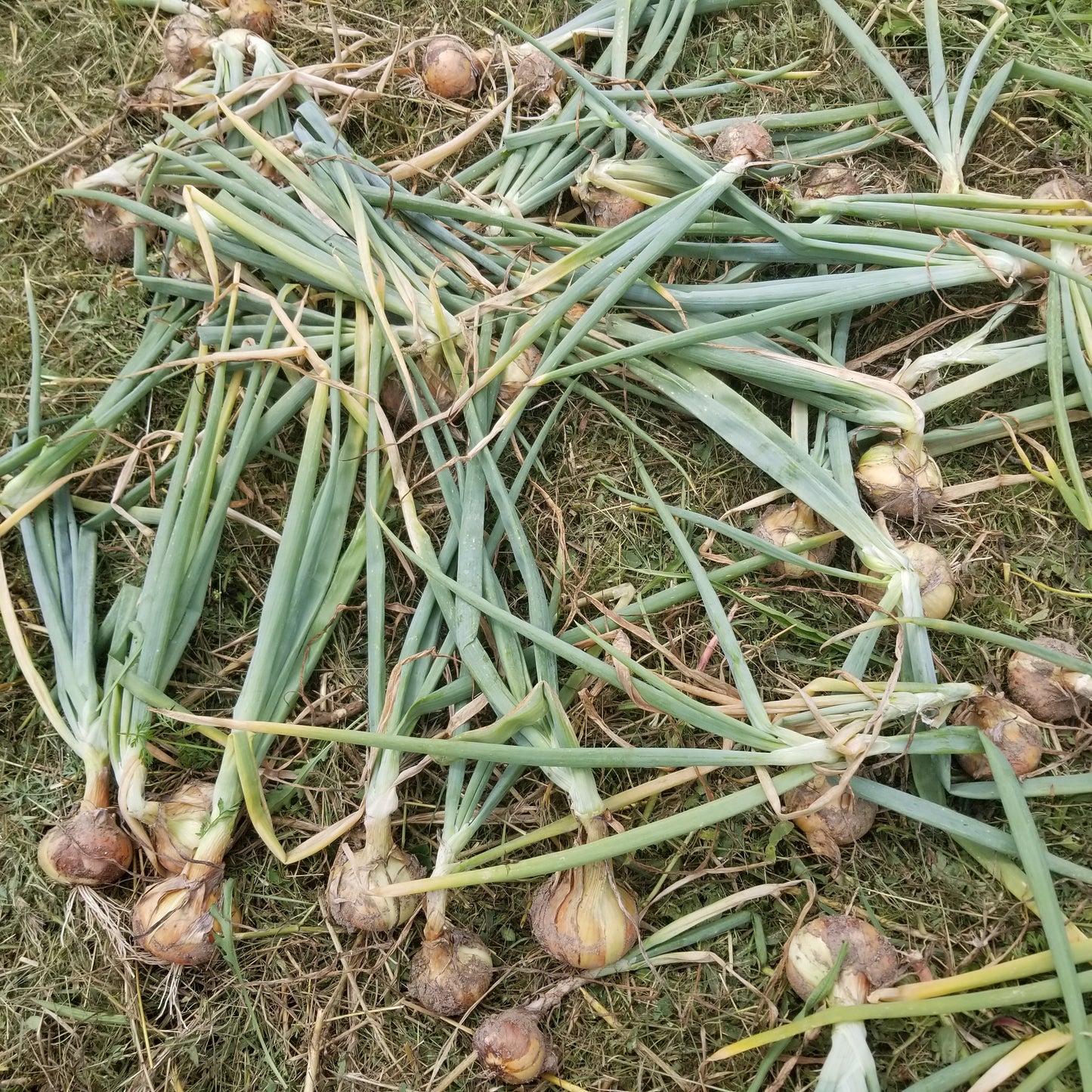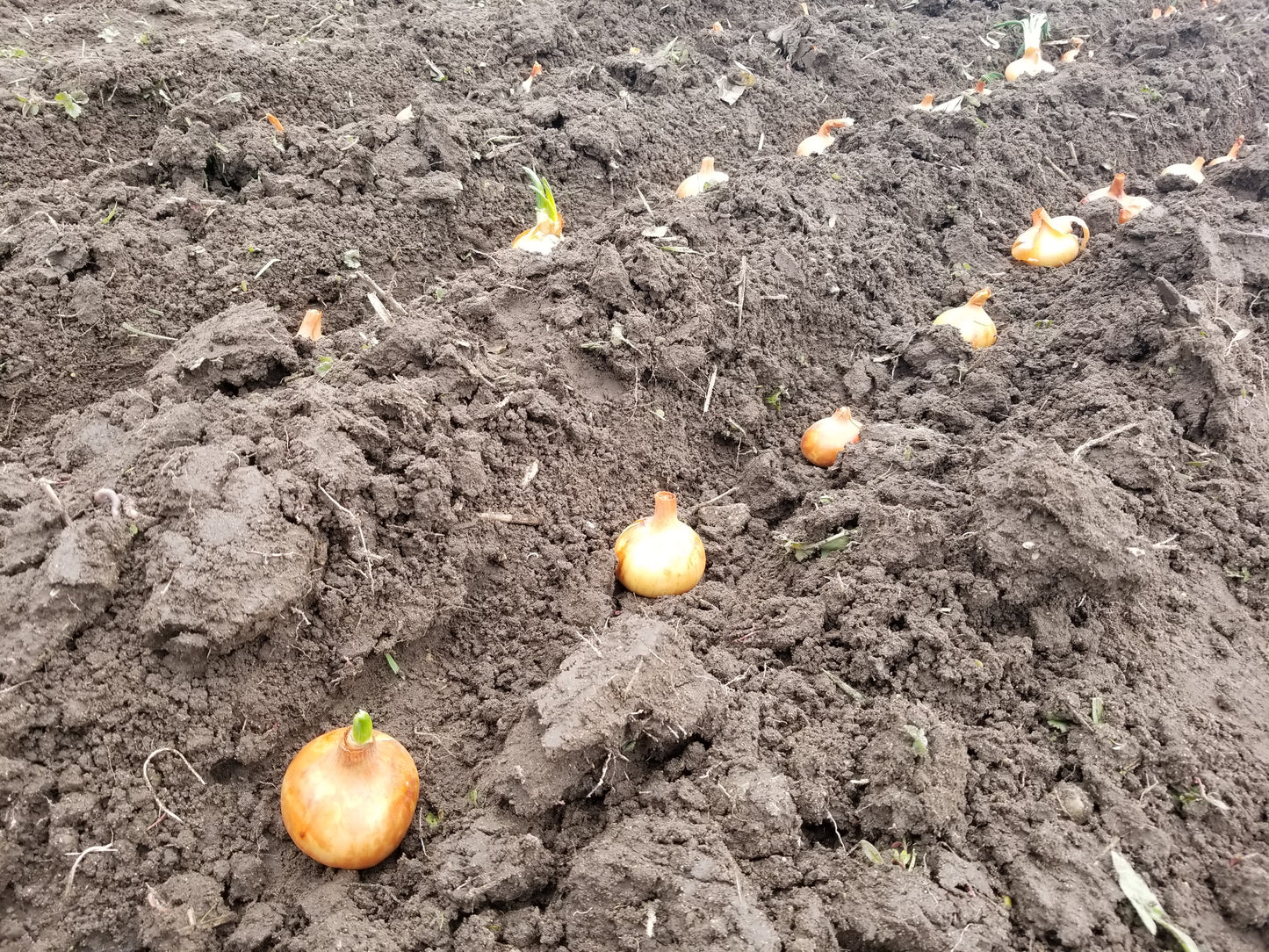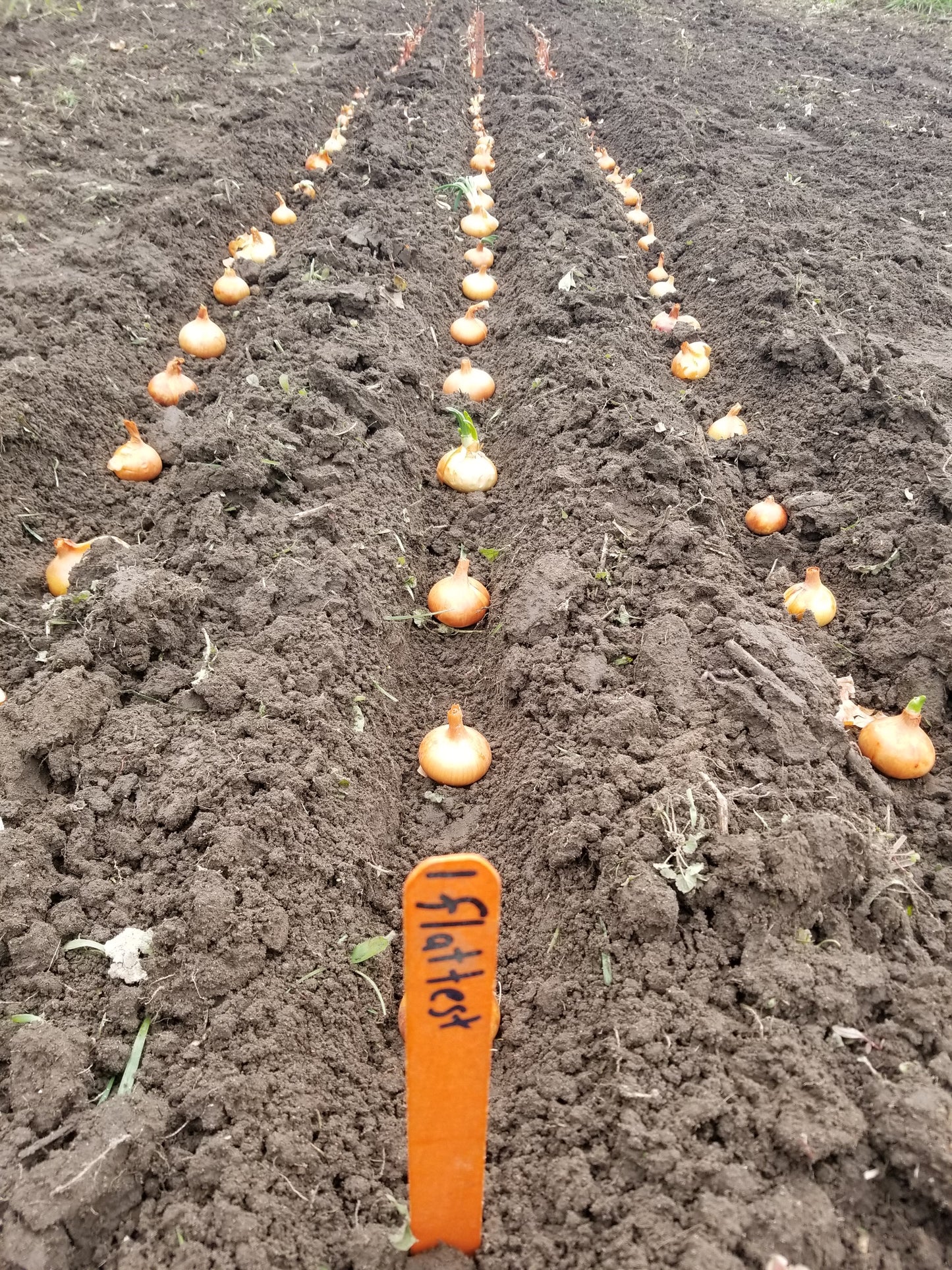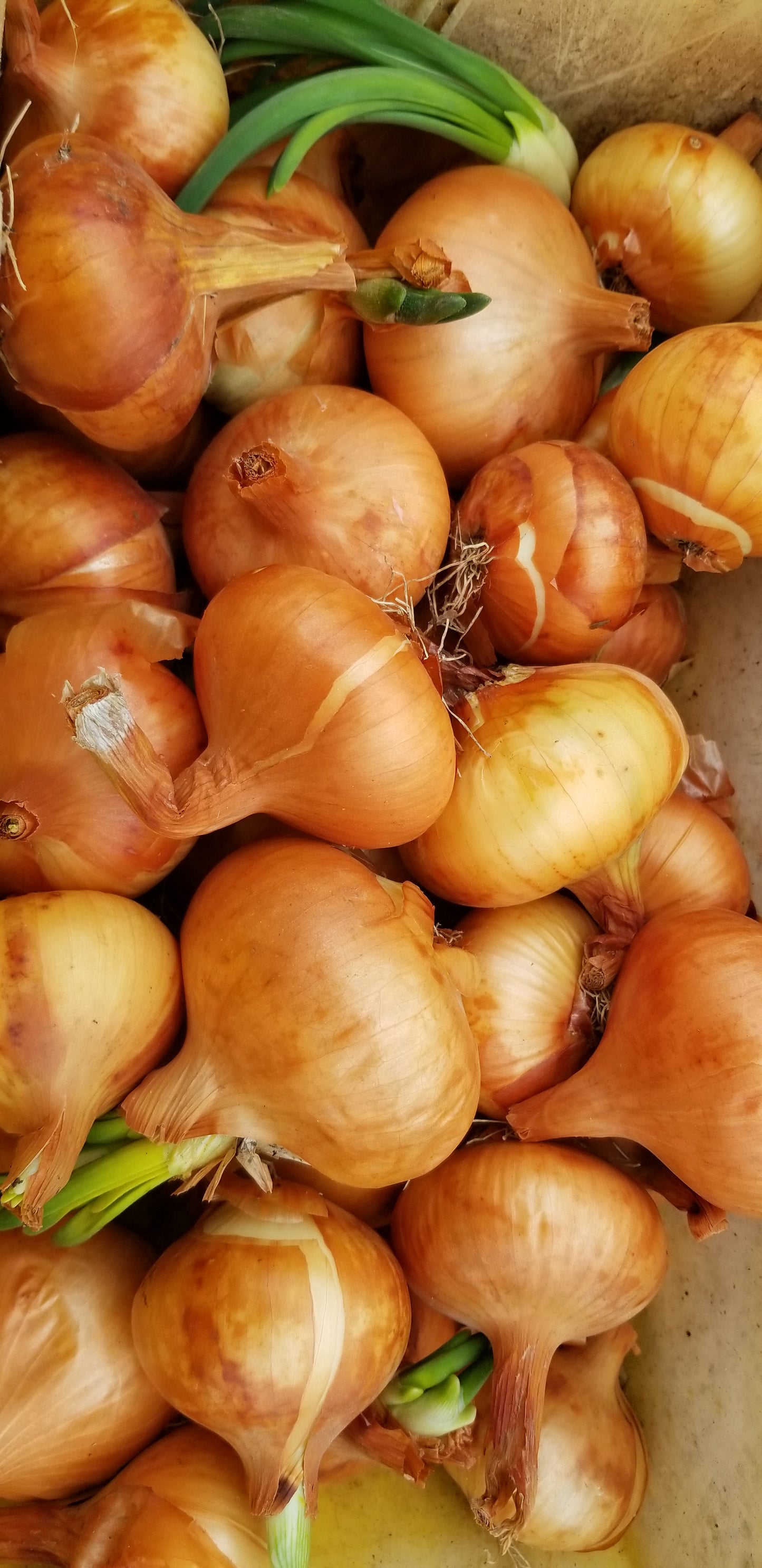Great Lakes Staple Seeds
Stuttgart Onion
Stuttgart Onion
Couldn't load pickup availability
(Allium cepa) Stuttgart (Stuttgarter) is a flattened globe type onion with golden yellow skin was selected to be our sole onion for its staple storage behavior and ability to thrive in the North. We don't desire massive bulbs, as who wants to put half a cut onion in their fridge! The mild flavor can be enjoy cooked, even as French Onion soup. Our seed onions were over-wintered in an unheated, cold, dry porch and not allowed to freeze. Firm bulbs were selected in the Spring as we felt over wintering stability was a key selection criteria. Those were split into two groups and planted separately: 'flat' and 'round'.
Historically, onions are often listed as the first of the domesticated vegetables because were less perishable than others, easy to grow and could be simple to transport. After the fall of the Roman Empire, Europe entered into Dark and Middle ages where main sources of food for entire population were beans, cabbage, and onions which fits nicely with our theme of Staple Crops. . During that time, onion was heavily used as both food and medicinal remedy. You could even pay your rent in onions.
We plan to offer these seeds in the near future.
While no known historical culture subsisted primarily on onions as a major calorie source, onions (Allium cepa) and related alliums (like leeks, garlic, and chives) have played important roles in various traditional diets for their:
-
Culinary versatility
-
Medicinal properties
-
Storage longevity
-
Ability to flavor bland staple foods
Here are some notable cultural and historical uses:
1. Ancient Egypt
-
Onions were a staple in the diet of workers and laborers, including pyramid builders.
-
Often paired with bread and beer, onions added flavor and nutrition to otherwise simple fare.
-
Onions were also used in burial rituals, indicating their spiritual and practical value.
Herodotus recorded that workers on the Great Pyramid of Giza were fed onions, garlic, and radishes.
2. Greco-Roman Cultures
-
Greeks and Romans valued onions for strength and stamina, especially among athletes and soldiers.
-
Roman soldiers carried dried onions and garlic as part of their military rations.
3. Medieval Europe
-
Onions were a primary vegetable in poor and monastic diets due to their availability and long shelf life.
-
Often consumed in pottages, stews, and with bread.
4. Central Asian Steppe and Nomadic Cultures
-
Wild onions and garlic (such as Allium mongolicum) were part of nomadic diets.
-
Used to flavor meat and grain dishes in regions with few fresh vegetables.
5. Indigenous Peoples of North America
-
Many indigenous groups, such as the Apache and Lakota, used native wild onions (Allium canadense, A. cernuum) in their diet.
-
These plants provided seasonal greens, especially in spring, though not in large enough quantities to be caloric staples.
6. South Asian and Middle Eastern Cuisines
-
While not caloric staples, onions are often the foundation of nearly every dish—fried, boiled, or dried.
-
Their ubiquity and importance in flavoring legumes, grains, and meats make them nutritionally and culturally central.
Caloric Role Analysis
-
Onions are low in calories (~40 kcal/100g).
-
They cannot feasibly make up a majority of caloric intake without severe nutritional deficiency.
-
However, they have amplified the palatability and diversity of high-calorie staple foods like bread, rice, lentils, and tubers across cultures.
Summary
No society has ever relied on onions for the bulk of its calories, but many cultures used them intensively as a flavorful, storable, and medicinal supplement to core staples. Their role in enabling people to consume otherwise bland or monotonous diets is historically critical, even if they weren't a primary energy source.







